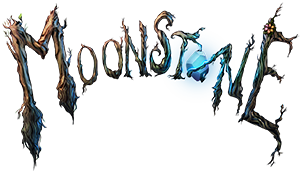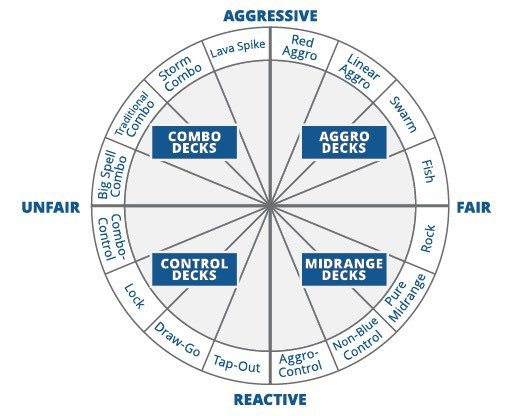Moonstone Through the Eyes of an MTG Player
I heard that Tom Greenway enjoyed Magic the Gathering (MTG) and it is also probably the game that got me into gaming seriously.
All that sun needs is a smile really…
The opportunity to compete in my local store every Friday lead me down the path of developing my playing, and learning to understand and treat games from a stand point that maximises odds and mitigates chance where possible. This lead me to some degree of success, and I worked up to playing in some large events and doing quite well in them.
I remember a pro MTG player releasing a book about the games strategy and I was very interested in what he had to say, I never got the book but read articles about it and many articles regarding the strategy of the game. One of the things that really stood out to me was the “Rock, Paper, Scissor” analogy. MTG has different deck archetypes, that over the years, became common nomenclature among magic players and helped to define the style of play you prefer. Here are some of the terms I encountered when I played:
Aggro - try to close the game fast and apply constant pressure to the opponent
Control - try to stall the game as long as you can to play one huge game winning card in the late game when your opponent has exhausted many of their options
Combo - try to find an (often infinite) combo to win you the game instantly
Midrange - mixture of things to kill opponents creatures and big creatures
Tempo - mixture of aggro and control but all cheap cards that allow you to manipulate the tempo if the game
Weenie - A type of aggro deck that spams small creatures
What I hope, is that moonstone is able to develop to the point that it establishes its own terminology for it strategies. The age old battle in MTG was red vs blue, how fast can the red deck go vs how effectively the blue deck can stymie the red decks spells. This is essentially aggro vs control. Now at the point of the book I mentioned, I was playing modern, a type of extended format with older cards in use. The meta at that time had the afore mentioned “Rock, Paper, Scissor” type breakdown to it and it went like this, Aggro beat Control, Combo Beat Aggro and Control Beat Combo. This was the general gist, but players then would adapt into mixed play styles like Tempo or Midrange to alter the meta game.
I have been trying to apply this same analogy to Moonstone (yes, I am finally getting to the point), and I have found it really interesting. Because Moonstone is not a race to deplete the opponents life total like MTG, instead the game is set to a time limit, and you must hold the most objectives until the game ends. I have found the analogy of aggro, control etc. doesn’t quite work how you would initially think it would. This is because there are really two layers to Moonstone, and probably other skirmish games that are objective focused. The two different games going on in skirmish games are Combat and Objectives and unlike MTG this doesn’t line up.
In MTG an Aggro deck has more creatures and is the aggressor, this is straight forward. In Moonstone this is not the case. For example,
During combat these two teams feel like this:
Humans - Aggro
Faeries - Control
However with objectives in mind they play more like this:
Humans - Control
Faeries - Aggro
Depending which lens you are looking through, the Faeries and Humans appear have a different strategy. Lets take a second to define those two terms. I use Control and Aggro as they are opposed naturally in strategy. Here are some definitions to make this analogy clear:
Control - Reactive play, Defensive, Denial effects
Aggro - Pro-active play, Aggressive, Permitting effects
So if we pitched Fancyhat against Teetoe in melee, we would have our money on Fancyhat. But Fancyhat would be the aggressor most likely and would have a lot of agency over the fight itself, more cards and more information about the opponents choices, more health points and more damage output. Where as Teetoe would likely be the defensive player, be looking for opportunities to reaction step out of the melee, try to use High guards to deny all damage and perhaps even use energy to dig for more melee cards to hit the high guard. You’d rarely see this the other way around.
Whereas, if we look at the objective focus and how each model wants to interact with stones. Teetoe wants to get the stone as soon as possible, and use her defensive abilities to keep it and run away. This still feels defensive, but if we look at it as an overall strategy of the entire Faerie team, if all Faeries got the stones and ran, they behave much more like an aggro deck, wanting to close the game as soon as possible, but they do this by not getting into combat. So this is a sort of aggressive defence. Putting pressure on the opponent to overextend models and putting them in danger of being swamped by the opposing team. They weight up the risk of loosing models to stop Faeries getting stones and leaving the battlefield. However, Humans would rather wait and pick up the stones later in the game and try to save their energy for combat which they excel at. This feels more like Control, as Humans will use their melee zone to deny the objective and hold out until the late game.
So Moonstone doesn’t line up exactly with the analogy used in MTG. What feels like Aggro is actually Control and vice versa. My leaning is towards analysing the teams based on how they interact with the objectives rather than how they feel in combat, as combat isn’t the primary win condition. So after all that waffle, I will try to leave a breakdown below using mtg terminology to define how I feel each faction plays:
Humans - Control - Cover stones with melee or ranged damage dealers and defend them using melee to hopefully fend off foes and then collect stones in the late game.
Gnomes - Combo Control - Use of group synergy and raw damage output to defend and deny access to moonstones with late game collection of stones.
Goblins - Tempo/Combo - Mixture of early and late game collection of stones flexing to the opponents strategy but also can use Shabaroon to combo models into aggressive positions getting stones early and running away or teleporting them to safety.
Faeries - Aggro - Get the stones as soon as possible and end the game as soon as possible by staying alive or leaving the board with defensive abilities (which I know is technically an oxymoron to say “defensive aggro” but hey).
Fauns - Midrange - some of the only models with the ability to pick up depth 4 moonstones in one activation and good movement. But also good damage output, but poor defence. This team aims to get stones early if they can or defend them if they need to with a good deal of 2” melee ranges at their disposal.
Spirits/Cultists - Combo - They aim to combo their list into whatever they need. Teleport a massive giant next to stones to guard them? Ok! Make tons of bunnies and summon a Jackalope to control the board? Yup. Simple teleport to a stone and pick it up? That too!
I hope you have enjoyed my analogy and I hope to see more strategy breakdowns of each faction in the future. Perhaps even some Moonstone specific terms to define the teams playstyles will emerge, who knows.
Happy Easter stoners!
Peace,
Karl Young




